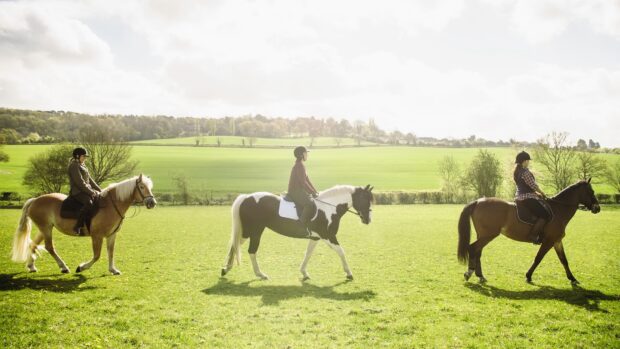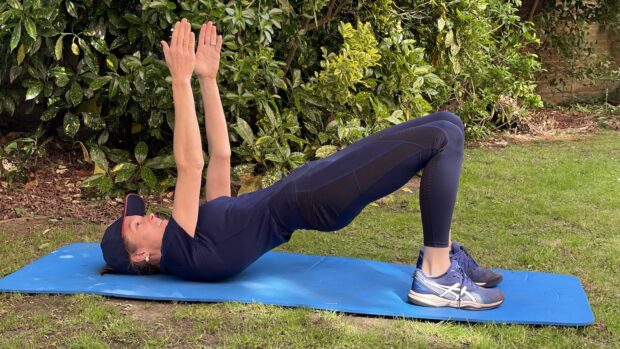Sports therapist Debbie Rolmanis explains the importance of controlled breathing for riders, and offers a useful exercise to help you improve your technique
Thankfully, remembering to breathe doesn’t have to be on our daily ‘to do’ list, or scheduled in our phones with a reminder alongside other chores. But while I am very grateful for evolution to have taken this responsibility away from me, there is a trade-off.
Having something of such critical importance happen without any conscious thought tends to relegate it to the pile of low priority. The casual disregard for how we bring life affirming oxygen into the body and rid it of toxic CO2 can be damaging our health, the way we move our bodies and the way we sit and function in the saddle.
Sound dramatic? That’s because it is.
Humans evolved to be predatory bipeds. Our ancestors were expected to hunt and gather; moving their bodies all day every day, performing all manner of movements; lifting, pulling, pushing, dragging, squatting, running, walking, climbing, hanging. To do this the body needed to be strong, flexible and well fed with oxygen from fully inflated lungs. We are still in bodies that are designed to do all of those things, and biomechanically we haven’t changed at all.
Humans are designed to have a long, strong torso. The ribcage and abdomen should create a strong cylinder that supports the spine and enables the limbs to work independently. This is influenced purely by the mechanic of breathing.
The impact for riders
We now know that in order to be strong and stable through the torso (a requirement when riding), we have to be able to fully expand the lungs. This allows the limbs to work independently from the spine/rib cage and it allows us to be in better balance over the horse.
Breathing out correctly is also crucial to the rider. There is a reason that some trainers encourage you to breathe out for downward transitions, so that you can increase your horses’ connection.
Why? Once you control an out breath you should feel why; you are now holding your own weight within your body. You have increased the stability of your position as you are maintaining the expansion of the torso, your spine is open and supported which enables your pelvis and hips to have more synchronicity with your horse. When you are in a more balanced seat, your horse is able to balance himself more correctly.
Exercise: expansion breathing
Recommendation: 3-5 reps of expansion breathing 3 x daily. More if possible.
Benefits
I have met very few people who breathe at their optimum, but for riders, being able to tap into the ability to breathe correctly is a massive secret weapon and here are a few of the benefits:
- • Lowers heart rate for you and your horse
- • By exhaling correctly you recruit trunk stabilising muscles, which will control downward transitions
- • Muscles can work longer and more effectively with better oxygen supply
- • Expanding the ribcage to inhale improves upper body posture and the connection of spine, pelvis and hips
- • Correct breathing maintains a long and strong torso which is essential for balance, independent aids and synchronicity with your horse
- • Helps digestion, organ function and reduction of pain
Technique
Stand with your feet hip width apart with a neutral spine and the back of the head lifted. Rock your weight back over your heels, and have a very small bend in the knee (soft knees).
Place your little finger on the top of your pelvis and your thumb touching your bottom rib.
To inhale: Take a deep breath in and increase the space between your thumb and little finger. The rib cage should rise as the diaphragm flattens to allow the lungs to expand and to draw air in. Your shoulders shouldn’t move, the movement should come purely from the ribs. Imagine that you are filling the lower back lobes of your lungs. Try and breathe in to a count of five.
To exhale: Squeeze the abdomen inwards and try to let the air out of the lungs in incremental bits whilst keeping the rib cage lifted. You want to think about releasing the air from the top to the bottom of the lungs bit by bit. By doing this you will engage the muscles that will keep the torso in expansion for a beneficial amount of time. Try to breathe out for as long as you can. If you can breathe out to a count of eight or nine (or more if possible) you will start to strengthen the muscles of the trunk.
Practice off-horse first, you may experience some slight light headedness initially, but persevere and this should resolve.
Once you have done a few breaths on the ground, do it next time you are riding. Practice controlling your exhalation as you ask for a downward transition and see how you both feel.
Find out more at dbmuscletherapy.com
You might also be interested in:

Rider fitness: what do we really mean by ‘core’ and how does it work?

Subscribe to Horse & Hound magazine today – and enjoy unlimited website access all year round
Horse & Hound magazine, out every Thursday, is packed with all the latest news and reports, as well as interviews, specials, nostalgia, vet and training advice. Find how you can enjoy the magazine delivered to your door every week, plus options to upgrade your subscription to access our online service that brings you breaking news and reports as well as other benefits.




